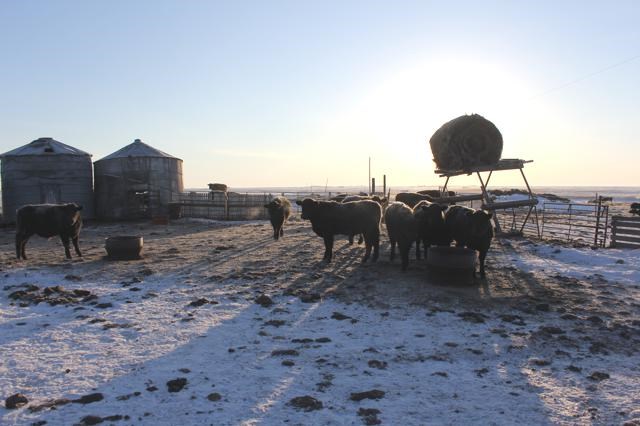The domestic demand for beef in Canada has been strong in 2018, which has been keeping cattle prices above average, and there are trade opportunities coming up that may be very positive for cattle producers, an audience was told at the Weyburn Ag Expo on Friday at McKenna Hall.
Christy Winquist of Farm Credit Canada, who specializes in the livestock industry from FCC’s corporate office in Regina, spoke about the potential opportunities and options that will come up for producers this coming year.
The strong domestic demand was a surprise for industry-watchers, she said, as this year there were a large number of cattle that stayed in Canada instead of going off-shore.
“Generally when we see numbers come up like that, we see prices drop, but there’s been a huge demand for our beef,” said Winquist, adding there has been profitability throughout the supply chain this year.
Looking at trade agreements, with the new NAFTA agreement, the United States-Mexico-Canada Agreement (USMCA) and the new Trans-Pacific trade agreement, she explained the impacts these will have on producers.
“The USMCA has been a positive story for beef producers. We’re not really gaining anything by it and we’re not losing anything as we will continue to have access to the U.S. market. What will change is the grading system,” said Winquist, noting the U.S. uses a five-point grading system that is slightly different from the Canadian one.
The CPTPP, the new Trans-Pacific trade agreement with a group of 10 nations around the Pacific Rim, will be positive in that it will help with trading beef to Japan, a country that loves Canadian beef.
“Before we were paying a tariff of 13 per cent above what competitors were paying,” said Winquist. “Once this is in effect, we’ll have the same tariffs that everybody else has. Japan has always been a customer of ours, the second biggest exporter of our beef. Now we have the potential to grow it and strengthen the demand coming out of Japan.”
The other trade agreement, CEDA, is with the European Union, and again has potential to be a positive market for Canada, as long as they can meet the stringent production requirements that European countries put on processing plants in Canada. These requirements include more stringent inspections by veterinarians, as an example.
“We are starting to see producers get the pieces in place,” said Winquist, noting they need to get the packing plants on board, as there are some requirements the EU customers have.
There are possible factors of other kinds of meat exports that could impact beef producers, said Winquist, noting for example the hog trade from the U.S. with China. If trade relations between China and the U.S. goes south, all the extra production of pork that American producers can’t sell there may be dumped into other markets, including Canada, which could affect meat prices here.
Another factor which will affect beef producers is the level of profitability, she said, noting by their projections, producers should remain profitable, but there will be very tight margins, which will be a challenge. The high price of feed may be one of the determinants in how well producers can manage that tight margin and keep the cost of production down.
The producer cannot control some impacts on cattle production, said Winquist, noting examples like disease and the risks of drought. She suggested producers of cow-calf pairs might see a better chance at profitability in the coming year, as she pointed to healthy calf prices this fall in the range of $1.85 per pound.
She also suggested that price factors, where market fluctuations and the value of the Canadian dollar are factors out of the producers’ hands, can be managed with tools such as the new option for livestock price insurance, which is now available for Saskatchewan livestock producers.
“It works best if you know your costs of production, then you can lock in a price where you know you’re not losing money,” said Winquist, noting that a producer should keep tabs on what the Canadian dollar is doing as they consider all factors to their profitability picture.
“Knowledge is your best friend, whether it’s market knowledge or managing the costs of production, and putting the time into figuring this out,” said Winquist.
The Western Beef Development Centre has a cost calculator available for producers that is a very good tool in determining one’s costs of production, she said, giving one example of a resource that could be used, along with going to a source like Canfax.




